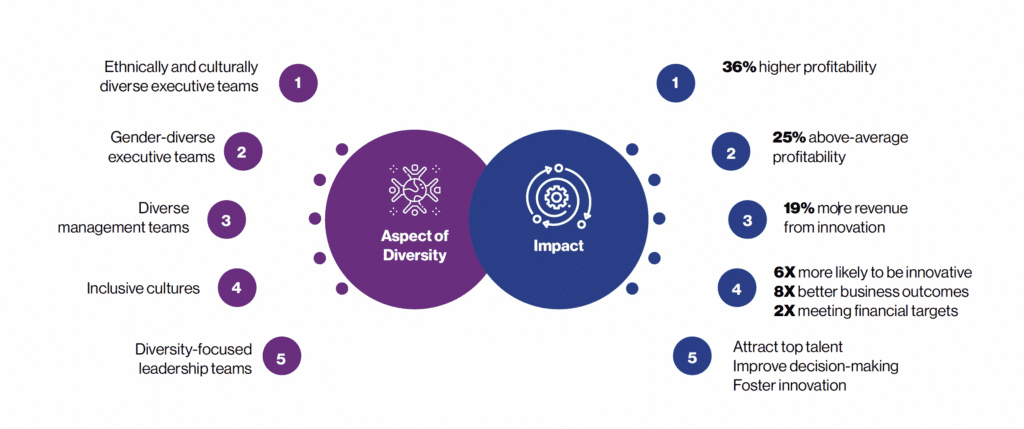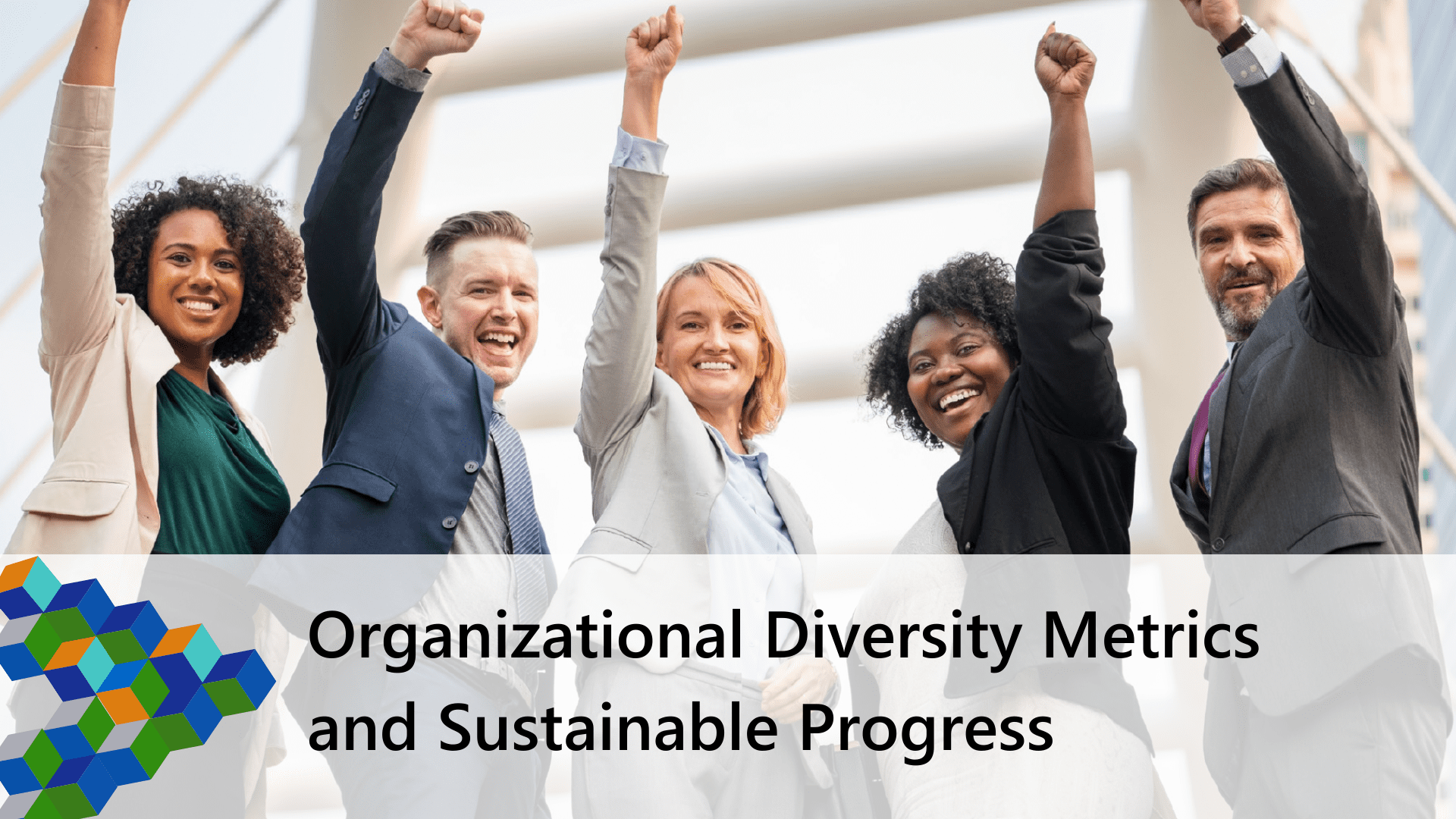From the standpoint of an organization, diversity is the fair representation and inclusion of individuals from a variety of backgrounds, experiences, and perspectives within its functioning. It encompasses and goes beyond the traditional dimensions of race, gender, and ethnicity to include a broader range of intersecting social characteristics such as age, sexual orientation, disability, socioeconomic status, religious beliefs, educational background, and cultural heritage.
One commonly cited definition of diversity comes from the Society for Human Resource Management (SHRM): “Diversity refers to the collective mixture of differences and similarities that includes, for example, individual and organizational characteristics, values, beliefs, experiences, backgrounds, preferences, and behaviors.”
This definition highlights the multifaceted nature of diversity, emphasizing that it incorporates a wide range of attributes that individuals bring to their roles. It recognizes visible and invisible dimensions of diversity and their impact on shaping organizational culture and effectiveness.
While recognizing the importance of diversity as foundational, periodically measuring diversity is critical as it allows organizations to understand the current state, identify gaps, and track progress over time.
According to a 2020 report by McKinsey & Company, companies with ethnically and culturally diverse executive teams are 36% more likely to outperform their industry peers in terms of profitability (Figure 1). Similarly, organizations with gender-diverse executive teams are 25% more likely to achieve above-average profitability. Beyond financial performance, diverse teams have been found to foster innovation, better decision-making, and improved problem-solving. A 2020 study by Boston Consulting Group revealed that companies with diverse management teams generate 19% more revenue from innovation than those with below-average diversity. Also, research conducted by Deloitte in 2021 highlighted that organizations with inclusive cultures are six times more likely to be innovative and eight times more likely to achieve better business outcomes.

Impact of Organizational Diversity – Key Statistics
Furthermore, a diverse organization is often better equipped to understand and meet the needs of a diverse customer base. Tim Cook, Apple’s CEO, perfectly sums up the significance of diversity in innovation when he says, “Diversity leads to innovation.” These words encapsulate the idea that diversity is not just a moral imperative but a business necessity that drives organizations to tap into their full potential.
Diversity in Geospatial Industry
Diversity holds a unique significance in the geospatial industry due to its interdisciplinary nature and the impact of geospatial information products on communities around the globe. By bringing together individuals from diverse areas of expertise, including cartography, statistics, GIS, remote sensing, computer science, social scientists and specific industry experts, geospatial companies understand the geographical, social, cultural, and political contexts while integrating spatial data from disparate sources. This is critical to represent and interpret the real world accurately. For instance, when creating maps, considering the cultural significance of place names, examining the social factors influencing land use patterns, and considering longstanding social disparities are essential for accurate, inclusive, and impactful representations.
Geospatial analytics benefits from diverse expertise as it incorporates statistical methodologies from diverse disciplines, such as epidemiology or incorporating socioeconomic factors, to identify ways for equitable distribution of resources.
Geospatial analytics benefits from diverse expertise as it incorporates statistical methodologies from diverse disciplines, such as epidemiology or incorporating socioeconomic factors, to identify ways for equitable distribution of resources. Additionally, geospatial problem-solving benefits from diverse lived experiences and approaches to create innovative and comprehensive solutions to novel and longstanding challenges. Simply put, diversity of thought and experiences enhances an organization’s ability to develop holistic geospatial services and solutions.
However, even as the geospatial industry is mindful of the importance of building diverse teams, this seems limited to the diversity of academic backgrounds within technical/operational teams. To fully leverage the potential of diversity, it is essential to evaluate diversity or the lack of it across different levels of organizations, particularly in leadership positions. Such an assessment leads to a deeper understanding of the existing decision-making and management landscape and reveals areas that require improvement.
Prepared with insights into gaps in representation, organizations can then implement targeted strategies to create an environment that values and respects multiple perspectives while actively integrating those perspectives into the decision-making process. Comprehensive explorations of diversity catalyzes meaningful organizational transformation and paves the way to a more inclusive culture.



